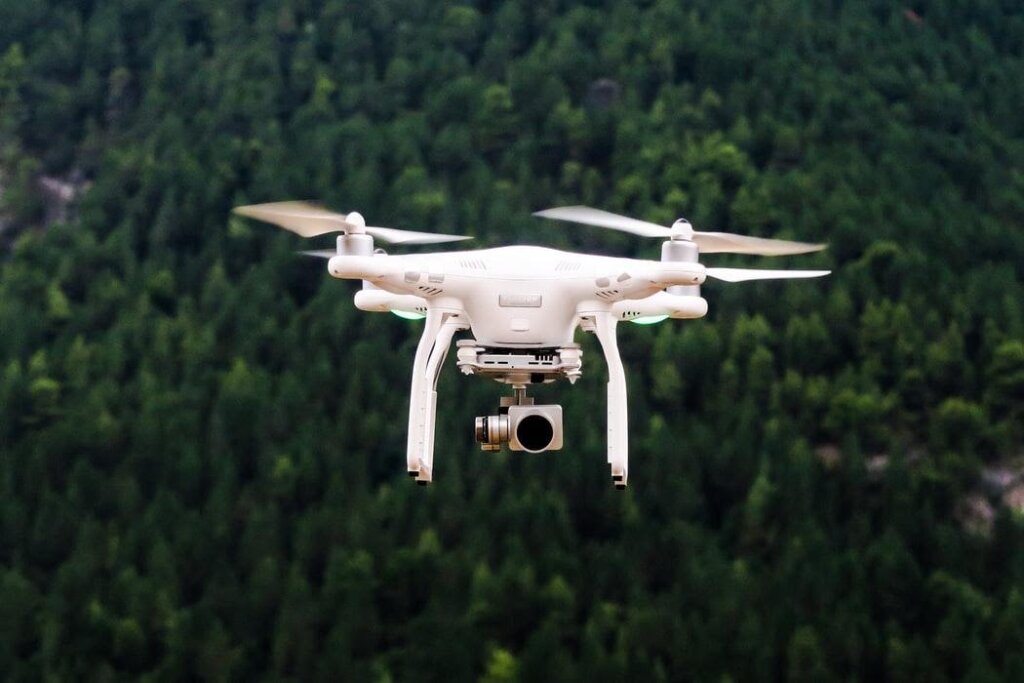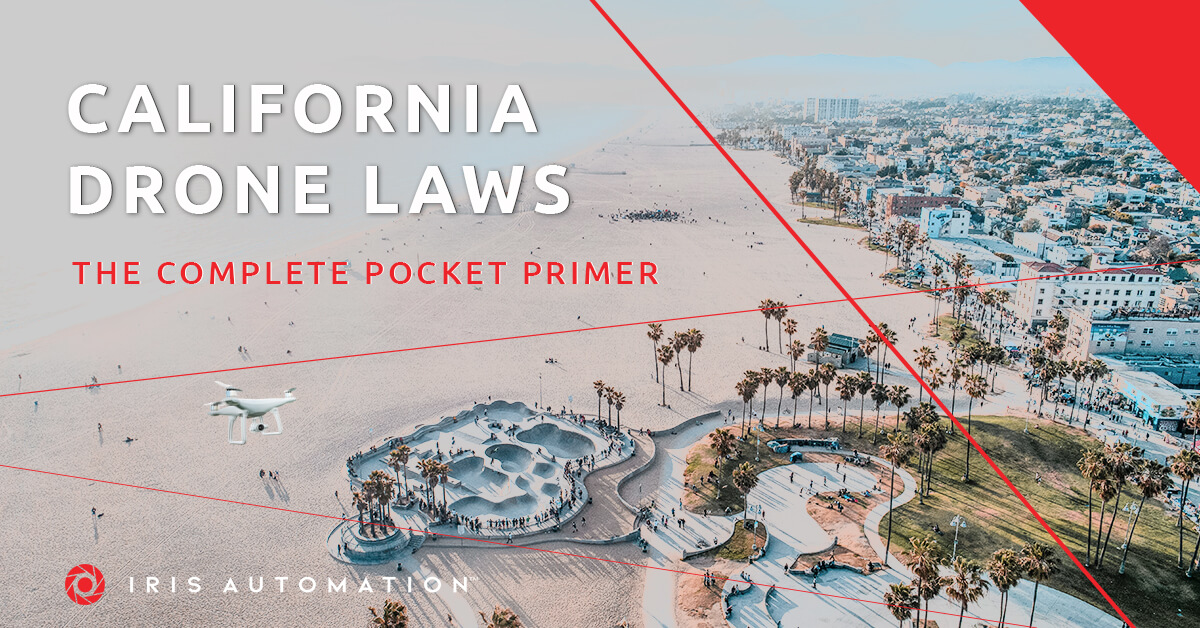California offers many advantages for enthusiasts who want to use unmanned aerial vehicles (UAVs)—or drones—for professional or personal use. In large part, this is because California has it all, ranging from stunning natural vistas to an abundance of commercial opportunities.
This post will serve as a primer on California’s drone laws. Keep reading to learn everything you need to know to start using drones in a way that complies with state and federal regulations.
Let’s jump right in.
First Things First: What Is a Drone?
Let’s get our definitions straight.
A drone is any system that uses a ground-based controller to communicate with a UAV. Drones can be classified depending on their weight (very small, small, medium, and large), as well as their range (very close, close, short range, mid range, and endurance).
Drones today support a variety of purposes ranging from aerial photography to commercial delivery and military usage. To date, enthusiasts have registered almost 2 million drones with the Federal Aviation Administration (FAA). There are almost 200,000 registered drone pilots in the US, and many more spread out across the world.
There are almost 200,000 registered drone pilots in the US, and many more spread out across the world.
Are Drones Legal in California?
The FAA maintains full jurisdiction over airspace within the National Airspace System. As a result, states aren’t allowed to ban the use of UAVs—meaning drones are legal to own and operate in California for both personal and professional use.
That said, different states have laws governing what you can do with drones. And California is no exception. So, in order to fly a drone in California without running afoul of the law, you have to adhere to both federal and state regulations.
Up next, we’ll explore some of the nuances in these laws.
California Drone Laws: An Overview
Personal Use
If you’re looking to fly a drone in California for non-professional (i.e., noncommercial) use—like to shoot video, take pictures, or just for fun—you must follow the FAA’s recreational model aircraft rules.
These rules require you to register your drone. They also limit where, when, and how you can fly your aircraft. For example, you must agree to only fly for recreational purposes. In addition, you can only fly below 400 feet above the ground in uncontrolled (Class G) airspace. To fly in controlled airspace (Class B, C, D, and E), you must obtain authorization from FAADroneZone or obtain a written agreement from the FAA for fixed flying sites. To fly in the immediate vicinity of the controlled airport you can get the authorization through Low Altitude Authorization and Notification Capability (LAANC).
Check out the FAA’s website for a complete rundown of additional laws that govern personal drone use.

Commercial Use
Businesses are starting to use drones in a number of exciting ways. For example, drones are being increasingly used for deliveries and for capturing aerial video for sales and marketing purposes.
The FAA has a three-step process you need to follow to obtain commercial drone authorization:
1. Learn the Rules
In order to use drones for commercial purposes in California, organizations and individuals must follow the FAA’s Part 107 Small UAS Rule. Basically, this rule allows you to use a small drone that is under 55 pounds for business or work.
It’s important to look deeply into Part 107 for a complete rundown of what you can do. Not all maneuvers are covered under this rule. These may require further permission. Examples include the following:
- Operation from a moving aircraft or vehicle
- Daylight operation
- Yielding the right of way
- Flying over people
Weight Restrictions
Rules vary for very small drones (weighing less than 250 grams) and very large drones, which can exceed 55 pounds.
For example, drones under 250 grams don’t require FAA certification for commercial purposes. However, drones that exceed 55 pounds will require an exemption under Special Authority for Certain Unmanned Aircraft Systems (49 U.S.C. §44807). This regulation replaced FAA 333 exemption of the FAA Modernization and Reform Act of 2012. However, you can still fly a drone under a Section 333 exemption.
For a complete list of operations that require a waiver, visit the FAA’s website. Read more about the FAA’s waiver application process here.
2. Obtain Remote Pilot Certification
In addition to following Part 107, the FAA will require you to obtain a Remote Pilot Certificate for business or work use.
To obtain this certification, you need to be at least 16 years old and able to read, speak, and understand English.
The FAA also requires you to be in proper physical and mental condition. The FAA provides a full rundown of its certification process here. In addition, you’ll have to pass a knowledge test.
3. Register with the FAA
After you brush up on all the rules and obtain proper certification, the third step is to register your drone with the FAA.
The good news is that registration is only $5, and authorization is valid for three years. You can pay with either a debit or credit card, and all you’ll need is the model number for your drone.
To register your drone with the FAA, go to dronezone.faa.gov.
4. Scaled up operations
For the complex airspace operations, where drones operate alongside conventional aircraft, Part 107 rules are not well suited. For the scaled-up operations (especially for the package delivery use case), operators might be asked to obtain Part 135 certification, operate Type Certified Drone, and pilots to obtain additional certification besides Part 107(e.g Part 61 or 141).
Each operation will be reviewed by the FAA representatives and exact requirements will be determined.
5. Specific area limitations
Certain State level and County level regulations may apply to operations in specific areas. Consult this list for regulations that may be applicable for your specific area within California (https://uavcoach.com/drone-laws-california/).
Here are some important things to keep in mind if you’re looking to own or operate a drone in California.
Key Points to Keep in Mind
Here are some important things to keep in mind if you’re looking to own or operate a drone in California. Remember that in addition to the following drone-specific regulations, drone operators must follow all other California laws as well, including those regarding privacy.
Using Drones in State-Owned Areas
While some areas are currently closed in California due to COVID-19, the state does have flexible laws allowing drones in most state parks, beaches, historic parks, recreational areas, and vehicular recreation areas.
However, it’s important to always check with the State Parks system for posted orders restricting usage. That way, you can ensure you protect wildlife, natural resources, and public safety.
Using Drones in National Parks
California has nine national parks, which is the most of any state. However, before you rush out and start using a drone in a national park, it’s important to check whether it’s allowed.
Many national parks, like Yosemite, restrict drone use. Violation of the ban is considered a misdemeanor and carries a maximum penalty of six months in jail and a $5,000 fine. Park rangers enforce these laws, and they have the discretion to consider potential violations on a case-by-case basis.
So, always check the park’s website to make sure that drone use is legal before using one. Otherwise, you could face stiff penalties. Also, keep in mind that the National Park Service has no authority to enforce its rules outside of the park’s boundary.
(Side note: The National Park Service occasionally uses unmanned aircraft for tasks like search and rescue operations, scientific study, aerial photography, and fire control, highlighting another drone use case.)
Obtaining Commercial BVLOS Approval
Beyond Visual Line of Sight (BVLOS) is a regulatory framework drafted by the FAA to ensure safe drone operation and reduce midair collisions for drones.
One of the top safety issues with drones is that it’s impossible to see other approaching aircraft because there’s no pilot on board. As such, the operator must maintain a visual line of sight with their drone. In other words, the drone has to stay within the operator’s line of vision.
BVLOS involves flying an unmanned aircraft beyond the direct line of sight of the remote pilot in command (RPIC). Part 107 rule does not allow BVLOS flights. Operators should apply for the Part 107 waivers or other authorizations from the FAA to fly BVLOS.
Ready to Fly Drones in California?
As you can see, there are a lot of considerations to keep in mind when it comes to flying drones in California. Since the last thing you want is to run afoul of regulations and risk fines or other penalties, it’s critical that you know the ins and outs of the laws so you can comply.
Interested in flying drones in California? Iris Automation can help your business ensure BVLOS regulatory approval. To learn more, check out Iris’s BVLOS Introductory Guide.
Questions? Contact us today.
This post was written by Justin Reynolds. Justin is a freelance writer who enjoys telling stories about how technology, science, and creativity can help workers be more productive. In his spare time, he likes seeing or playing live music, hiking, and traveling.

